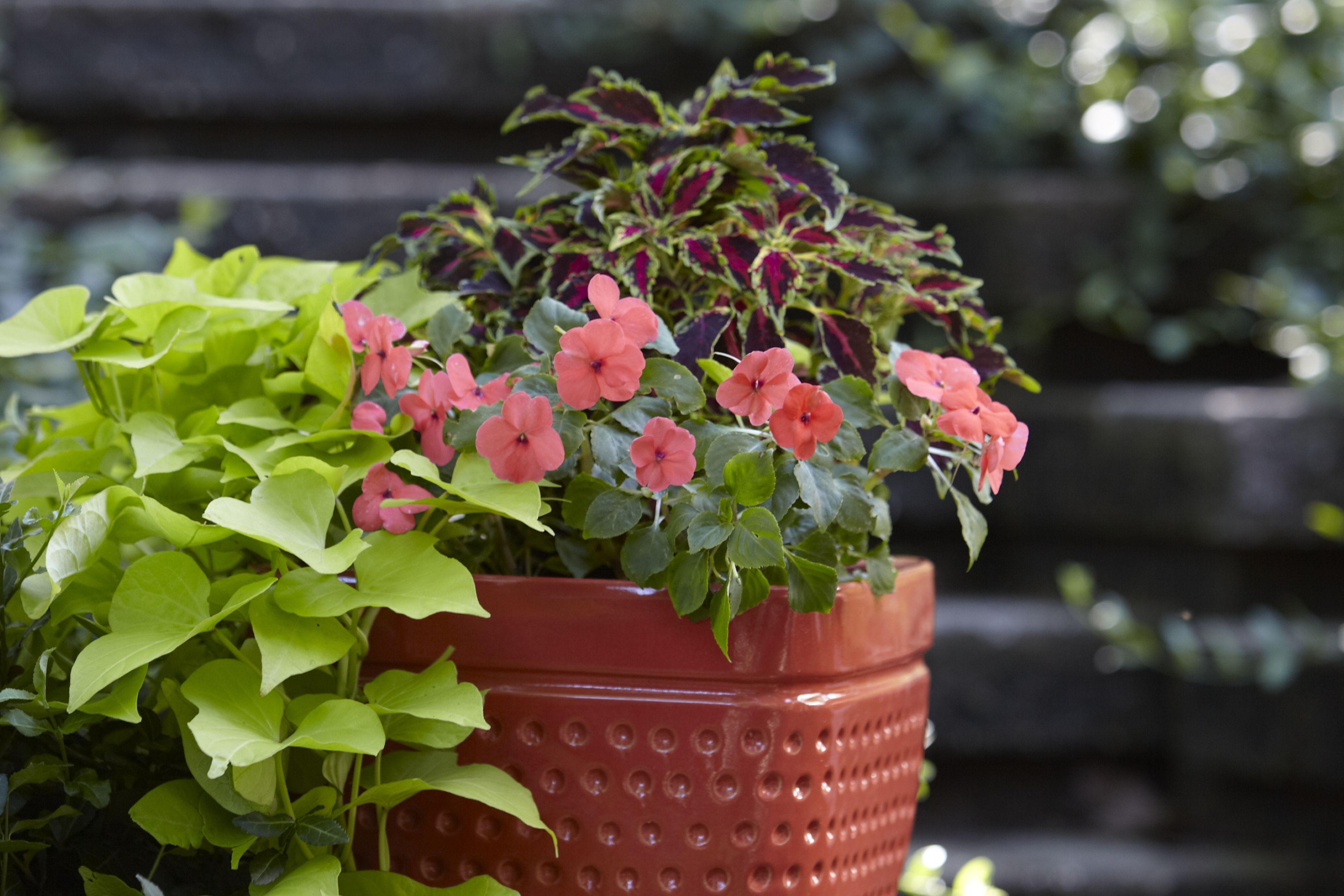10 Outdoor Plants to Propagate from Cuttings Before Winter Hits
Save money and your favorite plants by propagating these cuttings before frost.
Published on November 3, 2025
Blaine Moats
Want to keep tender herbs, annuals, and veggies alive through winter, but don’t have a lot of space indoors for growing plants? Taking cuttings of your favorite plants in fall and rooting them either in soil or water allows you to overwinter a wide variety of ornamentals and edibles and helps you avoid purchasing pricey new plants in spring.
To get you started, here are 10 common plants that are easy to overwinter as cuttings, along with tips on how to root and maintain them indoors until spring.
Tomatoes
Patio or bush tomato varieties are best for cuttings because the plants stay at a manageable size for indoor growing. Take 4 to 6-inch cuttings from healthy, non-flowering tomato stems. hits. Place the cuttings in a glass of water or in pots filled with seed starting or potting mix. Tomatoes root best in bright, indirect light, but once their roots have sprouted, they should be moved to a location with strong, bright light and watered regularly.
Basil
Peter Krumhardt
Before frost turns the leaves of your basil black and mushy, 3- to 4-inch cuttings from healthy basil plants in early fall to keep the herb alive through winter. Root the cuttings in potting mix or water. If you’re using the water propagation method, make sure to refresh the water often so it stays fresh and clear. Once the cuttings have roots 1 to 2 inches long, pot the cuttings in containers filled with potting mix
Geraniums
Hardy geraniums grow outdoors year-round, but tender annual geraniums won’t survive the winter in Hardiness ones 9 and below. Though the plants can be overwintered indoors as houseplants or in a bare-root, dormant state, overwintering geranium cuttings is the easiest way to save space. Geraniums root best in soil, rather than water, and will sprout roots faster if you dip the stem cuttings in rooting hormone before planting.
Coleus
Coleus plants are often grown in window boxes and planters, but they aren’t cold- hardy and die back with frost. If you want to keep these plants alive through winter, propagate cuttings in soil or water, and then keep them in a window that receives bright, indirect light. Coleus plants love humidity, too, so you may want to keep them on a pebble tray or near a humidifier to ensure their leaves don’t turn crispy and brown.
Rosemary
Many herbs survive winters without protection, but rosemary is a heat-loving plant that’s only hardy in zone 8 and above. In colder areas, rosemary can be overwintered as a potted plant or as cuttings. Before frost kills the plant, take cuttings from tender rosemary stems. Water propagation generally doesn’t work well for rosemary cuttings, but these plants should root readily in damp potting mix if you dip the cut stem ends in rooting hormone before planting.
Fuchsia
The hardiness of fuchsia depends on the variety; some fuchsias are only winter-hardy in zones 8 and up. That's why in cool climates, fuchsia is typically grown as an annual. To enjoy the brightly colored flowers (which are hummingbird magnets) next year, take 2- to 4-inch stem cuttings from healthy plants any time from spring through fall. Root the cuttings in soil or water. For a fuller plant look, plant several fuchsia cuttings together in a single pot, and provide your plants with a little extra humidity through winter to help them grow their best.
Begonias
Some begonias are more cold-tolerant than others, but most of the begonias that are grown as container or bedding plants aren’t winter-hardy. These plants do root easily in soil or water, though, and they make fantastic houseplants if you want to keep them inside year-round. To propagate begonias, take 3- to 4-inch cuttings from non-flowering begonia stems. Plant several cuttings together in the same pot to fill in empty soil space and create a more impressive-looking plant!
Pineapple Sage
Common sage is winter-hardy in most areas, but brightly colored pineapple sage is native to Central America and only winter-hardy in zones 8 through 11. Take healthy 4- to 6-inch cuttings from pineapple sage plants from spring through fall and root them either in soil or water. If you choose soil propagation, cover your pots and cuttings with a clear plastic baggie while the cuttings are rooting to increase humidity and help the cuttings root a little faster.
Sweet Potato Vine
Plants with tender vines are some of the easiest plants to propagate, and that’s certainly true of the sweet potato vine. These plants are often grown in containers as “spiller” elements, but they overwinter well indoors and root super-fast in water. Grow the rooted cuttings indoors year-round as houseplants, or move the young plants back outside in spring once the risk of frost has passed and nighttime temperatures consistently linger around 45 to 50ºF.
Impatiens
Peter Krumhardt
Impatiens are often grown as bedding plants or in planters for a pop of color. The tender, water-filled stems of these plants freeze easily in cold weather and cause impatiens to collapse into a mushy mess after frost. If you’d like to overwinter impatiens, take 4- to 6-inch cuttings before frost hits. Let the cuttings root in water in bright, indirect light, and then pot the cuttings into individual pots when their roots are at least 1 to 2 inches long.



